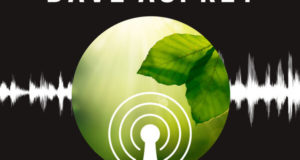A Look at Cluster Headaches
Like the common cold and chicken pox, practically everyone has suffered from headaches at one point or another. While a headache can make life miserable, they are usually just a short-term annoyance. For those suffering from cluster headaches, however, headache pain is a chronic and recurring issue.
Vicious Cycles
Cluster headaches are characterized not only by their intense pain, but also by their “cluster periods.” During such periods, people with this condition suffer one to three headaches per day. Cluster headaches affect one side of the face, and can last anywhere from 15 minutes to an agonizing three hours. Cluster periods can also persist for an excruciating amount of time, typically ranging from six to twelve weeks.
At worst, cluster headaches can strike each day for over a year, and the break between headache flare ups could last little more than a few weeks. Alternatively, some people can go a full year between cluster attacks, and the headaches themselves might stop after just one week.
Though doctors are not sure what triggers cluster headaches, it is believed that a part of the brain called the hypothalamus is likely involved. The hypothalamus contains the body’s biological clock, which might explain why cluster headaches strike at specific points during the day. Research has found that, during cluster periods, this region of the brain exhibits abnormal levels of activity.
Pain and Other Problems
To put it mildly, a cluster headache is far from a pleasant experience. People with this condition often wake up in terrible pain only an hour or two after falling asleep. In general, cluster headaches are concentrated either behind the eye or in the eye region itself. Making matters worse is that the pain can spread to the adjacent areas, such as the cheek, temple, upper gum, neck and shoulders.
As if the intense pain weren’t enough, the onset of cluster headaches often result in excessive tearing, pale facial skin, a drooping eyelid and swelling around the affected eye. Additionally, the nasal passage closest to the headache’s epicenter could become runny or stuffy.
Getting Relief
The medications used for cluster headaches can be divided into two categories ‒ preventative and acute treatments.
Preventative Medicines ‒ While there is no way to fully to prevent cluster headaches, certain medications can reduce the severity of their symptoms. These same drugs are also used to shorten cluster periods. Preventative drugs used for cluster headaches include calcium channel blockers (CCBs) and corticosteroids.
Verapamil, a CCB developed to control blood pressure, is usually the first option chosen to stave off cluster attacks. If a patient has only recently developed this condition, corticosteroids might be used instead. They can also be prescribed to patients who experience short cluster periods between long stretches of relief.
Though it is typically used to quell bipolar disorder, lithium can also treat cluster headaches should other medicines prove ineffective. Other possible options include nerve blocks, antiseizure medicines and beta-blockers.
Acute Treatments ‒ Acute treatments for cluster headaches are designed to quickly address headache symptoms. Included in this group is high-flow oxygen inhalation therapy, which requires the patient to inhale pure, 100 percent oxygen for a short amount of time. Oxygen therapy is a very useful tool against cluster headaches, as over 70 percent of people who use this method experience relief within 15 minutes. This option is not without drawbacks, as some find carrying around an oxygen cylinder and regulator to be cumbersome.
Triptans are another type of medication used for cluster headaches. They can be taken as a shot, nasal spray or tablet. Some people are treated with octreotide, an injectable drug that mimics a brain hormone called somatostatin. Other medications that may be used to subdue a nascent headache include dihydroergotamine, lidocaine and ergotamine.
A small number of cluster headache sufferers undergo surgery. This option is reserved for patients who fail to benefit from conventional treatments, or find their side effects to be intolerable. Such procedures attempt to reduce headache pain by disrupting certain nerve pathways, with the trigeminal nerve being the most frequent target. Because of a questionable success rate and the potential for post-surgery complications, this approach is rarely taken.
 Natural Knowledge 24/7 Educate yourself with nutrition, health and fitness knowledge.
Natural Knowledge 24/7 Educate yourself with nutrition, health and fitness knowledge.






